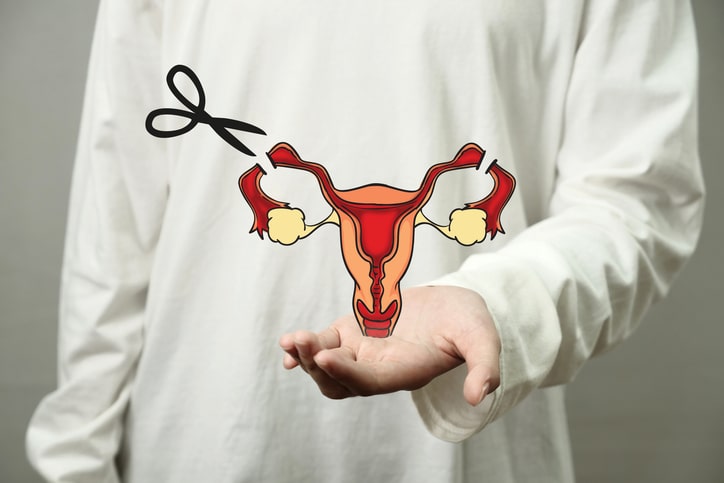Tubal ligation is a surgical procedure often referred to as “getting your tubes tied.” It is a form of permanent birth control that many women choose after they decide they do not want to have any more children. However, like any surgical procedure, there are potential side effects and a recovery process to consider. In this article, we will explore everything you need to know about tubal ligation side effects, the recovery process, and what your healed tubal ligation scars might look like.
What is Tubal Ligation?
Tubal ligation is a surgical procedure that involves blocking or sealing the fallopian tubes. This prevents the egg from traveling from the ovaries into the fallopian tubes, where it could potentially be fertilized by sperm, thus preventing pregnancy (American College of Obstetricians and Gynecologists, 2013).
The procedure is often performed for women who have decided they do not want to have more children in the future. It is considered a permanent form of birth control (Mayo Clinic, 2023).
The Procedure of Tubal Ligation
The tubal ligation procedure is usually performed under general anesthesia. The surgeon makes small incisions in the abdomen to gain access to the fallopian tubes. The tubes are then blocked, tied, or sealed, preventing the eggs from reaching the uterus (Cleveland Clinic, 2023).
The procedure is relatively quick, and most women can return home the same day. However, as with any surgical procedure, there are potential side effects and a recovery process to consider.
Tubal Ligation Side Effects
While tubal ligation is generally considered a safe procedure, it is not without potential side effects. Some women may experience complications during or after the procedure (Johns Hopkins Medicine, 2023).
Immediate Side Effects
Some immediate side effects following the procedure may include:
- Pain and Discomfort: Pain and discomfort in the abdomen where the incisions were made is common after tubal ligation. This can be managed with over-the-counter or prescription pain medication (MedlinePlus, 2023).
- Bleeding or Infection: Any surgical procedure carries a risk of bleeding or infection. If you notice excessive bleeding, discharge, redness, or swelling at the incision sites, or if you develop a fever, contact your healthcare provider immediately (Cleveland Clinic, 2023).
- Reaction to Anesthesia: Some women may have a reaction to the anesthesia used during the procedure. This can include nausea, vomiting, dizziness, or a sore throat (Mayo Clinic, 2023).
Long-term Side Effects
While most women recover from tubal ligation without any significant long-term side effects, a small percentage may experience complications. These can include:
- Ectopic Pregnancy: In rare cases, an egg can still be fertilized after tubal ligation. However, because the fallopian tubes are blocked, the fertilized egg cannot reach the uterus and implants in the tube instead, causing an ectopic pregnancy. This is a medical emergency that requires immediate attention (American College of Obstetricians and Gynecologists, 2013).
- Post-Tubal Ligation Syndrome: Some women report a variety of symptoms including irregular periods, heavy bleeding, severe pelvic pain, and changes in sexual behavior after tubal ligation. However, the existence of a post-tubal ligation syndrome is controversial and not widely accepted in the medical community (Johns Hopkins Medicine, 2023).
In Vitro Fertilization: The Best Option After Bilateral Tubal Occlusion
Bilateral tubal occlusion (tubal ligation) is a permanent method of birth control. However, if you decide to have more children after this procedure, in vitro fertilization (IVF) is the most effective option.
What is In Vitro Fertilization (IVF)?
IVF is an assisted reproduction treatment where eggs are fertilized with sperm in a laboratory and then the embryos are transferred to the uterus (Society for Assisted Reproductive Technology, 2023).
Why Choose IVF?
- High Success Rate: IVF bypasses blocked tubes and offers a high probability of pregnancy.
- Avoids Additional Surgery: Reversing tubal ligation involves major surgery with risks like infections, bleeding, and scarring, which may not guarantee success. IVF eliminates the need for this intervention.
- Control and Flexibility: It allows for planning and control of the conception process with additional techniques like genetic diagnosis. (Read more about the IVF Process)
Considerations
- Medical Consultation: Have a complete evaluation with a fertility specialist (Society for Assisted Reproductive Technology, 2023).
- Counseling: Discuss expectations, costs, and treatment steps with your doctor.
- Emotional Support: Consider counseling to manage the stress of the process.
Conclusion
IVF is an effective option for women and couples who want to have children after bilateral tubal occlusion. Consult a specialist to explore this option and plan your treatment. For more information on fertility preservation, read here.
References
- American College of Obstetricians and Gynecologists. (2013). Sterilization for Women and Men. Retrieved from ACOG
- Cleveland Clinic. (2023). Tubal Ligation. Retrieved from Cleveland Clinic
- Johns Hopkins Medicine. (2023). Tubal Ligation. Retrieved from Johns Hopkins Medicine
- Mayo Clinic. (2023). Tubal Ligation. Retrieved from Mayo Clinic
- MedlinePlus. (2023). Tubal Ligation. Retrieved from MedlinePlus
- Society for Assisted Reproductive Technology. (2023). In Vitro Fertilization. Retrieved from SART




